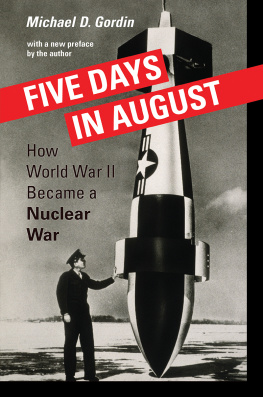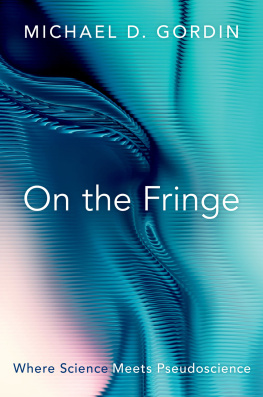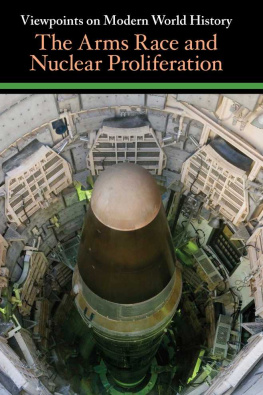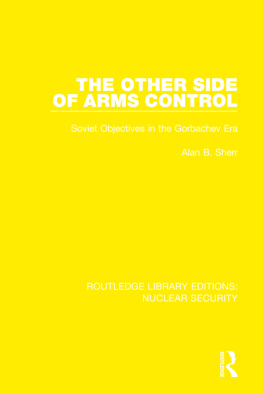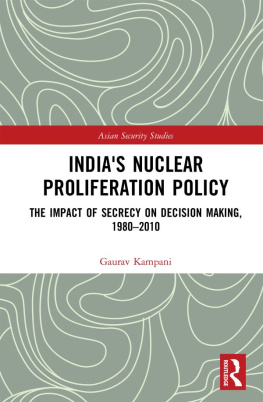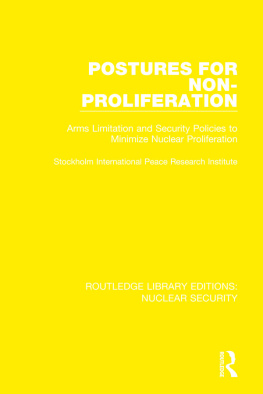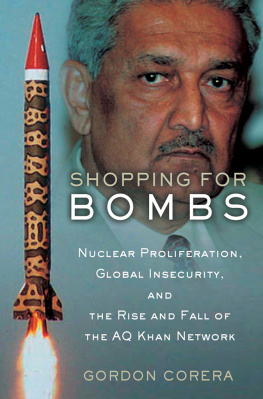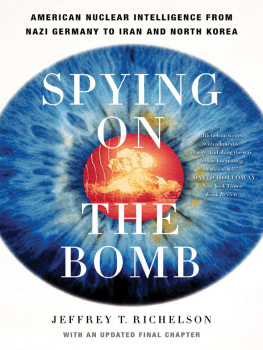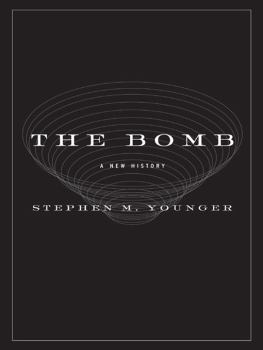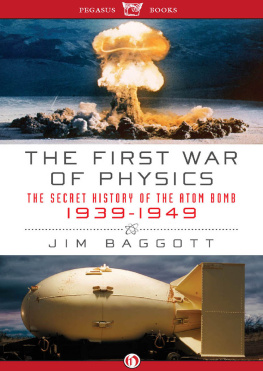EPILOGUE
TRACES AND TAILINGS
So he took his wings and fled;
Then the morn blushd rosy red;
I dried my tears, & armd my fears
With ten thousand shields and spears.
WILLIAM BLAKE, THE ANGEL
W hen Harry Truman assumed the presidency of the United States upon the death of Franklin D. Roosevelt on April 12, 1945, he had never heard of atomic bombs: not what they were, not that they were feasible, not that the Americans were attempting to build one, not that they were about to succeed. By the midterm congressional elections of November 1946, not only had he learned of the existence of the Manhattan Project, but he had authorized the use of its weapons against an enemy, initiated the first nuclear test series, proposed the first multilateral arms-control agreement, and seen that proposal decay into a stalemate. By the presidential election of 1948, which he won by a nose over Thomas E. Dewey, he had already faced the blockade of Berlin and the Czechoslovakian coup, announced the Truman Doctrine, approved the second nuclear test series, and unified the Department of Defense. By the next midterm elections in November 1950, the United States was engaged in a hot war with the Soviet proxies of North Korea and the Peoples Republic of China, had uncovered several rings of atomic spies, authorized a massive conventional, nuclear, and thermonuclear buildup, andcruciallyseen the end of the atomic monopoly with the first Soviet nuclear test. Just over five years, and the postwar world had transitioned from an anti-Fascist grand alliance into a bipolar cold war. While they were not at the center of each of these developments, nuclear weapons tinged and shaped all of them. The cold war hardened at precisely the period that America (and the world) learned to think about, deal with, and live among nuclear weapons, and both war and weapons would remain linked for the next forty years.
Understandably, given this dismal track record, Trumans advisers on both atomic weapons and science policy were tired and more than a little overwhelmed. For James Bryant Conant, the essential feature of this new atomic world was expansion of the regime of secrecy, to an extent no one would have imagined possible fifteen years ago. Because the Americans developed their atomic weapons in the context of intense classificationat first to block the Nazis from learning anything about their intentions, and later to forestall the Sovietsmuch of the information that the public had received was incomplete, misleading, or simply false: Governments are forced to say things about technical developments that are not necessarily accurate and... information that leaks more or less in a planned fashion is even less reliable. of information was one of the many sinews that linked nuclear weapons to the cold war itself.
The story I have told could be read as a prehistory to the world many already recognize, or at best as a plug filling in a hole between two important historical epochsWorld War II and the cold war. But this account is much more than the prologue or epilogue to the real history. The international narrative of the construction and detection of the first Soviet atomic explosion and the aftershocks that came in its wake is essential to an understanding of the position of nuclear weapons even in our present postcold war world. For nuclear weapons are bound up today with power, secrecy, and fear. That linkage was built in these first years of living with the bomb, and understanding the origins can provide some tools for living in a new, and somewhat altered, nuclear present.
At the onset of the Korean War, there were fewer than two hundred nuclear weapons on Earths surface; as of 2002, there were more than twenty thousand. As that relatively small initial number exponentially increased over the following decades, the history to be told expanded with it. I cannot address those developments fully here. Instead, I will explore five points in particular that draw directly from the history of First Lightning, Joe-1, Vermont, or whatever other moniker the first Soviet explosion bore: the superpower arms race, contrasting styles of intelligence gathering, the first limited arms-control treaties, nuclear weapons proliferation, and ecological destruction. Each of these developments built with a steely logic upon patterns of reaction and response that were first established during the atomic monopoly.
David E. Lilienthalformer director of the Tennessee Valley Authority, veteran New Dealer, and the first chairman of the Atomic Energy Commissionplayed a central role at the dawn of the nuclear age. Often his private diary and public pronouncements provided an optimistic gloss, a hope that perhaps the worst predictable consequences of the nuclear standoff could be averted. By 1963, more than a decade after leaving atomic politics, Lilienthal had no optimism left:
The story of nuclear weapons is not one of change in a world of change, but essentially one of repetitiona circle in which we and the Russians have gone round and round, chasing each others tails, year after year after year. This is the source of our despair, of our frustration, of our fear. We seem to remain locked in the same cell of circumstance, the Russians and ourselves together, with what at times seems only a remote hope of ever emerging.
The main indicator of this mirror symmetry, this vicious circle, was the construction of massive stockpiles of nuclear weapons and ever-advancing delivery systems with which to rain them down on the opposing side.
When Truman left office in early 1953, the United States had already built 832 nuclear weapons. Within a year, that number had risen to 1,161; in two years, to 1,630; and in three years, to 2,280.
Henry Kissinger, then professor of government at Harvard University and a nuclear strategist (and over a decade away from becoming the architect of President Richard Nixons realpolitik), believed that this ratcheting effect of American capabilities, which in turn spurred further escalation on the Soviet side, was only the logical outcome of the bipolar nuclear situation. Not only was the seesawing armament race a natural response, it was positively a good thing. The growth of the Soviet atomic stockpile, Kissinger wrote in 1957, has merely brought the physical equation into line with the psychological one; it has increased our reluctance to engage in war even more. We all know that no nuclear warlimited or globalbroke out in the second half of the twentieth century. We probably shall never know exactly why, but it was not for lack of armament or opportunity.
At the same time that the atom was mobilized for war, it was simultaneously domesticated for peace. The Soviet Union adopted nuclear power more enthusiasticallyand in the case of the 1986 Chernobyl meltdown, more destructivelythan even the United States did, and aspects of nuclear culture were to be seen everywhere, from radioactive decontamination of food to nuclearpowered In the meantime, whether or not the Soviet Union ever adhered directly to MAD or massive retaliation or limited nuclear war fighting, they continued to build weapons at roughly the same rate as the Americans.
More weapons meant, naturally, more testing, a link that was established at Trinity and reinforced by the successful detonation of First Lightning on August 29, 1949. The world is today in a moratorium on nuclear testing, initiated on the American side by Congress during the presidency of George H. W. Bush in 1992. It was none too soon. According to official data, as of January 1, 1991, there had been 2,059 nuclear tests around the world: 1,085 by the United States (including 205 in the atmosphere) for a total blast yield of 141 megatons of TNT equivalent. The Soviet Union had detonated only 715 test bombs, including 215 in the atmosphere, although with a total TNT equivalent of 452 megatons, over three times the American. (These figures do not include so-called peaceful nuclear explosions, or PNEs, which the Soviets deployed for a limited time in order to stimulate gas and oil fields, mine ore, extinguish oil and gas fires, incinerate nuclear and chemical waste, store such waste underground, and mold the geophysical landscape.) First Lightning was the first of many.


